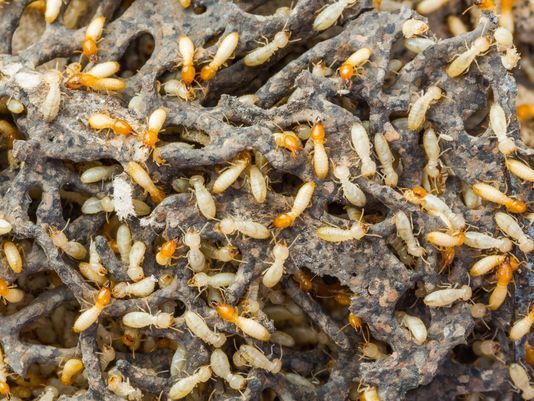Subterranean termites are responsible for the majority of termite infestations within the United States. The most common types of subterranean termites in the US include Formosan subterranean termites, which regularly cause widespread damages within the Gulf states, as well as eastern and western subterranean termites. Eastern and western subterranean termites have the widest distribution range of all termite species in America. In addition to subterranean termites, drywood termites also cause damage to structures in America, but not nearly as much as their subterranean counterparts. Subterranean termites differ from drywood termites in that subterranean termites require regular contact with moist soil in order to maintain proper hydration. Drywood termites, on the other hand, do not require contact with soil, nor do they require high humidity levels. Instead, these termites inhabit and feast on pieces of wood that are most commonly found in the wild, such as dead and rotting logs in forest landscapes. There is even a third type of termite that is far less common in America, but is abundant in tropical regions around the world. These types of termites are known as Neotermes. The term “Neotermes” refers to a diverse genus that includes around one hundred termite species. Neotermes termites are not native to the US, but luckily, their habitat range is limited to only southern Florida. Unlike subterranean and drywood termites, Neotermes termites require access to free water sources, and not water extracted from soil or damp pieces of wood.
In the United States and its Caribbean territories, Neotermes are endemic to Florida, Puerto Rico, the Virgin Islands and Hawaii. The few Neotermes species that are endemic to the US live in habitats that are limited to subtropical woodland environments. These termites can also be found in urban areas located on Florida’s coastal peninsula as well as in the Florida Keys. Due to the Neotermes termites’ water requirements, infestations occur in structures where large amounts of free water can be found. Free water can result from heavy pipe leaks, or violent storms. Since these conditions also lead to wood-fungal rot, Neotermes termite infestations are frequently found concurrently with fungal rot.
Do you think that the Neotermes genus of termites will eventually migrate into states located to the north of Florida?

